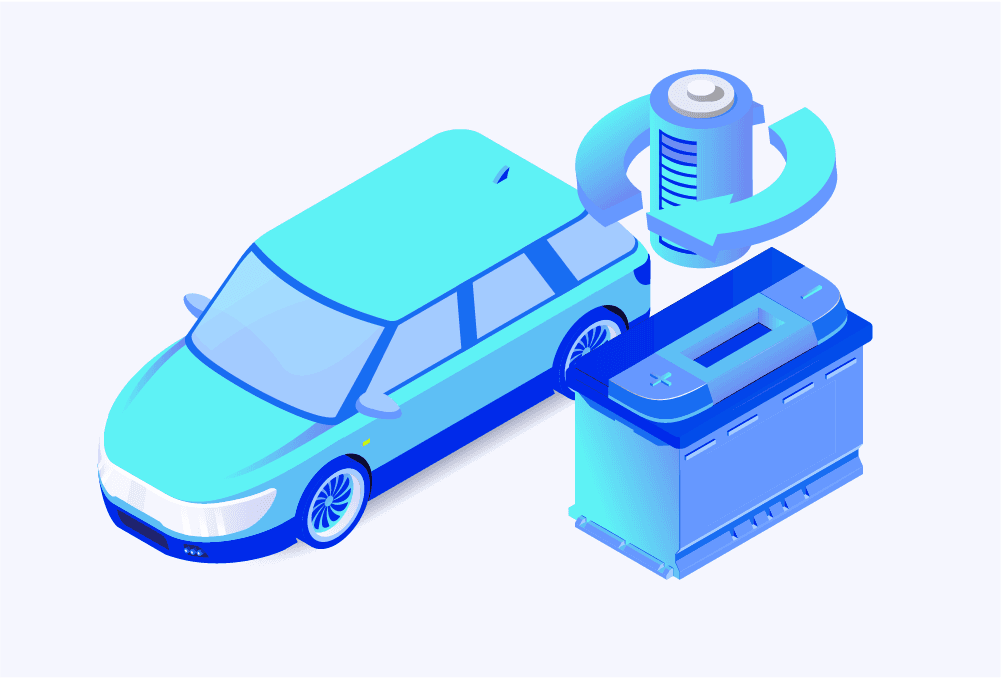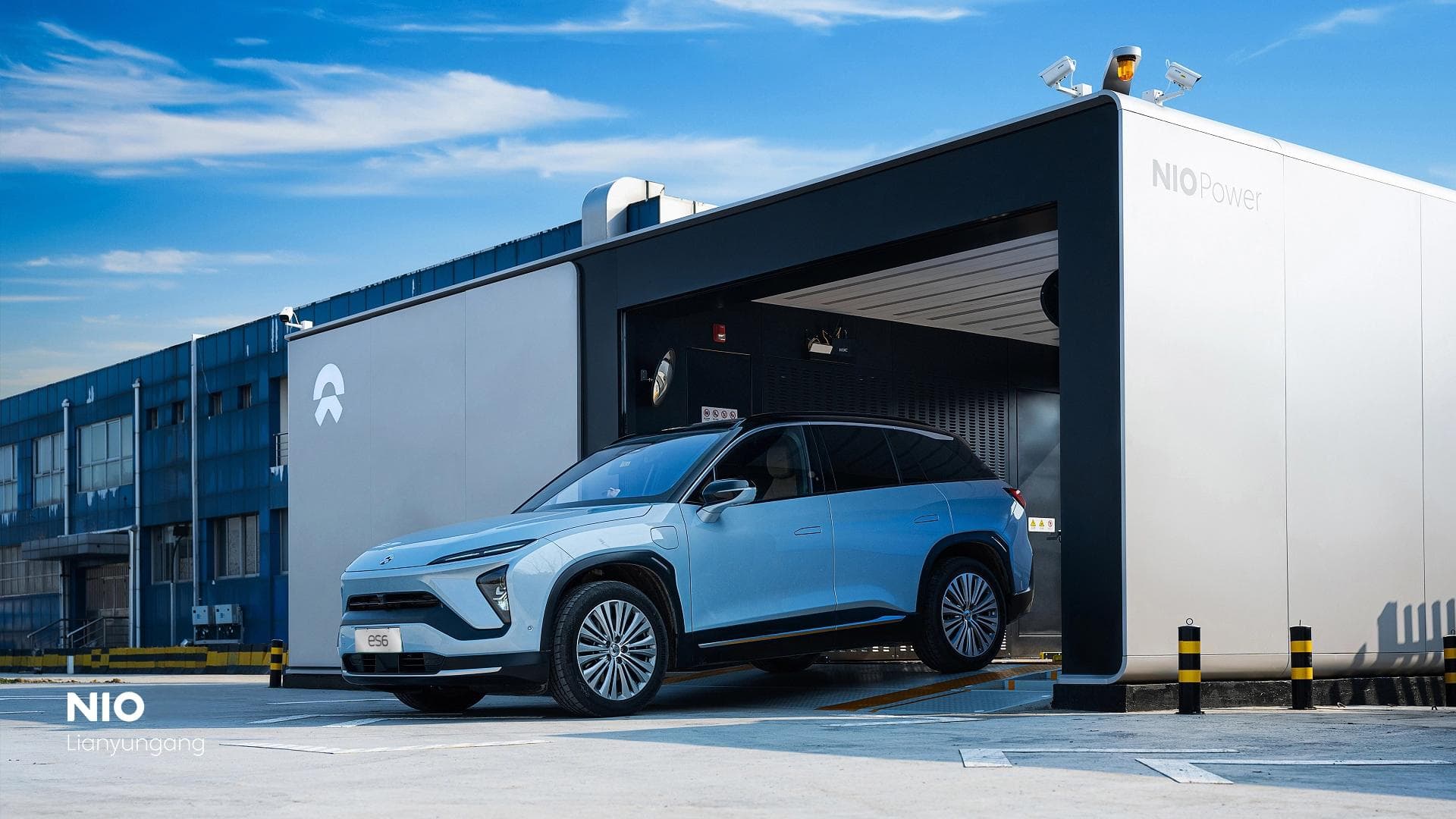While the electric vehicles popularity increases all over the world, range anxiety and charging time still pose a threat to mass EV adoption. It’s not a surprise, given that electric vehicles on a broader scale are still relatively new, and those who tend to travel often and on lengthy distances may find them slightly intimidating.
In response to the issue, many technologies are being introduced aiming to better the charging experience and shorten the time it takes to charge the battery before setting back on the road.
Some, like rapid chargers, are welcomed with great enthusiasm, others, like battery swapping, not so much.
In this piece, we’ll try to shed some light on what battery swapping is, what the benefits are, and why there are so many skeptics.
What is battery swapping?
In a nutshell, battery swapping is a take on omitting the charging session wait time and exchanging the discharged battery for a fully charged one. The main goal is to even out the charging experience with the one everyone knows from fuelling up an ICE car.
The good part of this solution is that the process aims for full automation. With the use of robotic cranes, the battery changing time can be shortened to somewhere between 6 and 10 minutes, approximately as much as one spends at a gas charging station.
Certainly, this solution leaves a major question: what about the batteries? For it to work, the car batteries can’t be owned by the EV owner. In this case, the EV driver must lease them from either the car manufacturer or the battery supplier.
How does battery swapping work?
The way this works on paper is rather simple. EV owner drives up to the specialized battery swapping station. The car then goes on a dedicated platform, where the vehicle gets slightly lifted to retrieve the battery. The battery is then disconnected from the vehicle and lifted out by a crane or other lifting device (the vision expects this to be an automated process). A new, charged battery is then put into place and connected to the vehicle. The EV is driven off the platform and away from the station.
Batteries that have been taken out stay at the station and are being charged up again. Once they’re fully charged, they're ready to be used for another swapping session.
Up until recently, battery swapping was just a bold idea, not really firmly in practice. However, a Chinese company, Nio, managed to put the vision into life on a rather big scale.
Nio battery swap
Nio is a Chinese super-company producing electric cars. Some call the Shanghai-based EV manufacturer the new Tesla. In April 2021, Nio started its European expansion by launching services in Norway, currently the biggest EV market in this part of the world.
Apart from quite a few car models, which are doing exceptionally well in China, Nio has aroused a lot of interest by introducing the battery swap stations on a rather big scale - earlier this year, they announced completion of the 1000th battery swap station. In terms of how this works, the mechanisms are similar to the ones described above.
The swap station looks a bit like an automatic car wash. The car drives in, straight on the platform. Automatic mechanisms unbolt the battery pack and exchange it for a new one. This works for all Nio’s models and is available in three different battery capacities - 75kW, 100kW, and 150kW. The exchange takes up to 6 minutes.
Given the amount of swap stations available and the lighting-speed in which one goes for a full battery, it may seem like great technology. There are however quite a few issues to be taken into account before even starting to think about applying this on a larger, international scale.
Nio's battery swapping station, source: https://www.nio.com
Battery swapping - will this ever work on a larger scale?
In order to answer this question, one needs to take into account all the advantages and disadvantages of such a solution. Certainly, at least at first glance, it may seem like an extremely attractive and efficient way, especially on lengthy distances or when time matters.
Such instances occur especially with heavy-duty transport (meaning trucks) or buses in cases when a lengthy stop for charging is not possible. However, there’s a lot more to the story.
Benefits of battery swapping
As it has been mentioned before, “charging” time is the number one attractive feature behind the solution. Given that loading up the EV battery will always be compared to fuelling up an ICE car, battery swapping may be the closest experience in terms of the length of the procedure.
Battery swapping stations (in their more advanced forms) can also serve as an energy storage and a hefty way of incorporating the demand response practices. As batteries are (usually) stored within the charging station, they make up for quite a capable power system. In cases of a high demand, some of the energy could be fed back to the grid - this would’ve happened in cases when there a quite a few idle but charged batteries available.
Another positive aspect is that with battery swapping stations, the possibilities of installing solar panels on the roofs are quite significant. With that, EV drivers could not only enjoy a fast car charge but also the satisfaction of having it done mostly or entirely via green energy. Both aspects - the battery storage and the chance of using PV are a great way of ensuring the EV charging business remains eco-friendly and contributes to the overall grid’s health.
Lastly, battery swapping directly impacts the cost of an electric vehicle. With a solution expecting to lease batteries rather than buy them as a part of a vehicle, EV drivers are exposed to prices reduced from what often might be the most expensive part - the battery.
Disadvantages of battery swapping
As much as the benefits look rather promising, too bad, it seems like the disadvantages outweigh the whole solution.
First and foremost, the costs of building a battery swap station are inordinate. It is estimated that one such station may cost anything between 450 000 - 600 000£, which means that with the current prices, building up a whole network must cost millions of dollars. Naturally, like with any other tech-advanced solution, the prices are likely to go down in the future, yet still, they’ll probably be higher than the majority of CPOs could invest.
On top of that, it must be remembered that the cost does not include the land they’re supposed to be built. Here’s where another issue emerges. While “classic” EV chargers don't require much space and can be installed in existing infrastructure, the battery swap stations are a lot more spacious and require construction to be set up for them to run.
The biggest obstacle, though, may be the interoperability of such stations. As much as Nio is settling strong in the Chinese market, it must be remembered that their stations only work with their car models. Given, more and more brands are introducing their electric vehicles, the diversification of available models gets bigger and bigger, making it extremely difficult to match. This more or less leaves three options for the battery swapping.
- Each car manufacturer starts developing their swap stations, which would involve a huge investment and most probably the lack of space
- Battery swapping stations are developed in such a way as to serve various models, which in practice would cost even more, if at all possible
- Car manufacturers agree on universal battery installation, which in many cases would require significant changes in the whole production process
All of the above are beyond complicated in terms of their broad-range adoption. Things complicate even more with the battery ownership in the above scenario. Simultaneously, the concept of universal batteries emerges, making it a whole other case to be discussed.
Some battery-swapping ventures have taken place in the past. For example, Tesla has put forward the idea as they were looking for investors. However, the plan got cancelled probably faster than it was introduced. Renault also tried.
They even launched a sub-brand called Better Place in order to facilitate the management and setting up of the swap stations. After almost 5 years, the company filed for bankruptcy.
Battery swapping post scriptum
As much as we might have brought some negativity into the narration, it must be underlined that although extremely difficult for a wide-range adoption, battery swapping may still be a decent option in some cases. Looking at China’s example, there are instances where the solution can work. For European standards, it may not necessarily be cars, but there’s a whole plethora of other ways to facilitate it, i.e., with the scooter businesses.
You can learn more about the smart eMobility and emerging trends from our ebook The Growing Concept of E-Mobility. It can be downloaded freely for everyone.


